ACCOUNT OF THE FABLES AND RITES OF THE INCAS

Account of the
Fables and Rites
of the Incas
BY CRISTBAL DE MOLINA
WITH AN INTRODUCTION BY BRIAN S. BAUER
TRANSLATED AND EDITED BY
BRIAN S. BAUER
VANIA SMITH-OKA
GABRIEL E. CANTARUTTI

Copyright 2011 by the University of Texas Press
All rights reserved
Printed in the United States of America
First edition, 2011
Requests for permission to reproduce material from this work should be sent to:
Permissions
University of Texas Press
P.O. Box 7819
Austin, TX 78713-7819
www.utexas.edu/utpress/about/bpermission.html

The paper used in this book meets the minimum requirements of ANSI/NISO Z39.48-1992 (R1997) (Permanence of Paper).
LIBRARY OF CONGRESS CATALOGING-IN-PUBLICATION DATA
Molina, Cristbal de, 16th cent.
[Relacin de las fbulas y ritos de los Incas. English]
Account of the fables and rites of the Incas / by Cristbal de Molina ; with an introduction by Brian S. Bauer ; translated and edited by Brian S. Bauer, Vania Smith-Oka, Gabriel E. Cantarutti.
p. cm. (The William and Bettye Nowlin series in art, history, and culture of the Western Hemisphere)
Includes bibliographical references and index.
ISBN 978-0-292-72383-2 (cloth : alk. paper)
1. Inca mythology. 2. PeruHistoryConquest, 15221548. I. Bauer, Brian S. II. Smith-Oka, Vania, 1975 III. Cantarutti, Gabriel E. IV. Title. F3429.M7213 2011 299.8113dc22 2010045473
ISBN 978-0-292-72999-5 (E-book)
Preface
TRANSLATORS NOTES
T he original version of Cristbal de Molinas manuscript titled Relacin de las fbulas y ritos de los incas is lost. The only remaining copy is held in the National Library in Madrid (Manuscript 3169, fols. 236). The document is not dated, but the handwriting appears to be from the late sixteenth or early seventeenth century (Porras Barrenechea 1986: 353). It is the first of six critically important early colonial works on the Incas that have been bound together with vellum into a single volume (Duviols and Itier 1993: 15). This collection comes from the personal library of Francisco de vila (ca. 15731647), a Jesuit who led a series of brutal anti-idolatry campaigns in the Andes a generation after Molina. vila was also a great collector of books and manuscripts, accruing what then was the largest library in Peru (Salomon 2008; Hampe Martnez 1996). The other documents included in the volume are: Joan de Santa Cruz Pachacuti Yamqui Salcamayguas Relacin de antigedades deste reyno del Pir (ca. 1613), Polo de Ondegardos Traslado de un cartapacio a manera de borrador (ca. 1572), Francisco de vilas Tratado y relacin de los errores, falsos dioses y otras supersticiones (ca. 1608), the anonymous Huarochir Manuscript (ca. 1608), as well as a summary of Garcilaso de la Vegas Comentarios reales de los incas (1609). This famous collection of documents was first identified by Pascual de Gayangos, who sent a copy to Clements R. Markham (1873: vii).
Although we have tried to remain true to Molina throughout this translation, we have made some changes to make his document more accessible to a wide readership. For example, we have divided many of his excessively long sentences into shorter, more comprehensible lengths, and we have added punctuation where it lends clarity to the text. We have also followed English rules of capitalization; spelled out abbreviations included in the manuscript; and added chapter breaks, chapter titles, and subheads that are not present in the original. In some sentences, we have made minor grammatical changes such as correcting tenses and plurals. Furthermore, we have simplified some of the repetitive phrases Molina uses; for example, el dicho (the said) is generally translated as that. In far fewer places, we have added a word or two or a proper name to rectify an ambiguous sentence or to clarify confusing pronouns. The added words are marked with square brackets. Finally, we have also simplified some of his sentences by adding commas to separate items in a series and reducing the number of articles.
Some information was noted in the margins of the manuscript. The paragraph breaks were marked with a v, and various lines of text that contain blank spaces were marked with an o. These markings have not been reproduced in this translation. However, the other annotative information included in the margins of the document is provided in the footnotes of this translation. Finally, in a few places, words were crossed out and replaced with corrections, and in other passages one or two words were erroneously copied twice. We have reproduced these elements of the text within our translation.
QUECHUA WORDS
Molinas frequent use of Quechua words and his inclusion of numerous Quechua prayers offer great challenges to any publication of his work. The fact that the original document has been lost, and the oldest remaining example of the document is a copy, adds complexities to understanding the Quechua words included within the text. Additional difficulties are introduced when the same Quechua words are spelled in different ways within the manuscript. We have, however, followed Molinas spelling for the more obscure terms, places, and names, and we have not attempted to edit his Quechua prayers.
Initially we made our own transcriptions of Molinas Quechua words based on our readings of the Madrid document. We were, however, uneasy with the results of our work, since we are not linguists nor are we Quechua speakers. Fortunately, as we entered into the final stages of our translation work, Julio Calvo Prez and Henrique Urbano (2008) published a comprehensive paleographic edition of Molinas document. Respecting their fine scholarship, we defer in most cases to their paleographic reading of the document.
After much debate, we have also decided to provide a translation of most Quechua words when they appear in the text. Again, we were hesitant to do this because of our limited Quechua skills, but in the end we believe that in-text translations will help general readers better understand the document. However, to avoid clutter, we translate frequently used words, such as ayllo [kin group], chicha [an alcoholic drink made from maize], huaca [shrine], mitimas [colonists], mullu [Spondylus shells], taqui [dance], tarpuntaes [priests of the Sun], only on their first use. A general glossary is also provided to help readers understand the many Quechua terms and the wide range of spellings found in the manuscript. Readers who are interested in learning more about the use of Quechua in Molinas work should see Calvo Prez and Urbano (2008) and other earlier editions of the document.
ACKNOWLEDGMENTS
W e thank the Office of the Dean (College of Liberal Arts and Sciences) as well as the Department of Anthropology at the University of Illinois at Chicago for providing financial support for this work. We would also like to thank John Monaghan, Alan Covey, Nancy Warrington, and Jeffrey R. Parsons, who aided us at various stages of the project.
THE LIFE AND TIMES OF CRISTBAL DE MOLINA
|
CA. 1529 | Cristbal de Molina is born in Baeza, Spain. |
Next page
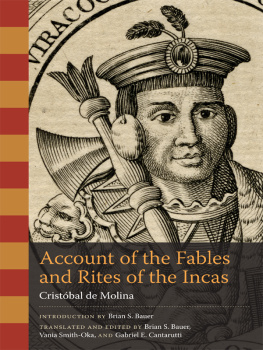
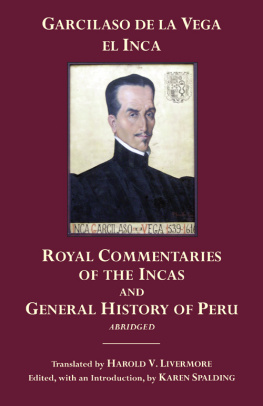
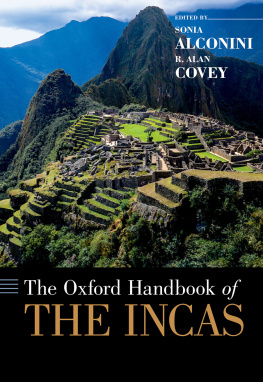
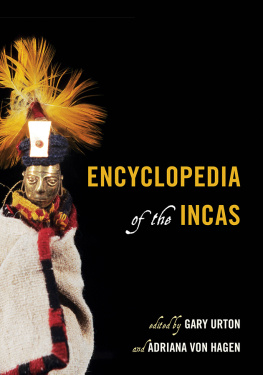


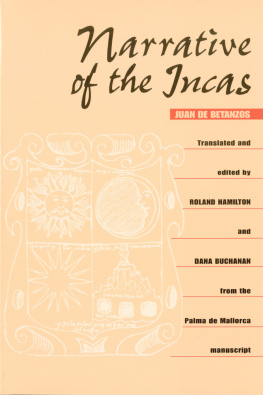

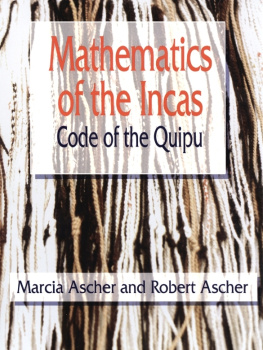
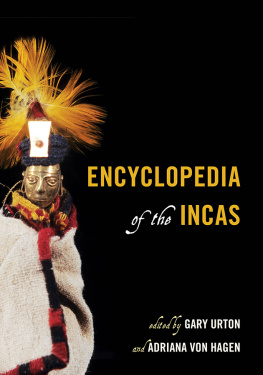
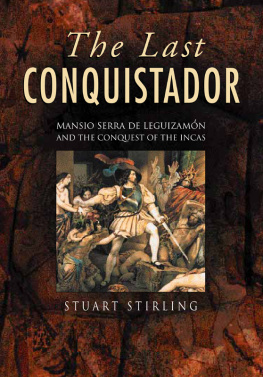


 The paper used in this book meets the minimum requirements of ANSI/NISO Z39.48-1992 (R1997) (Permanence of Paper).
The paper used in this book meets the minimum requirements of ANSI/NISO Z39.48-1992 (R1997) (Permanence of Paper).